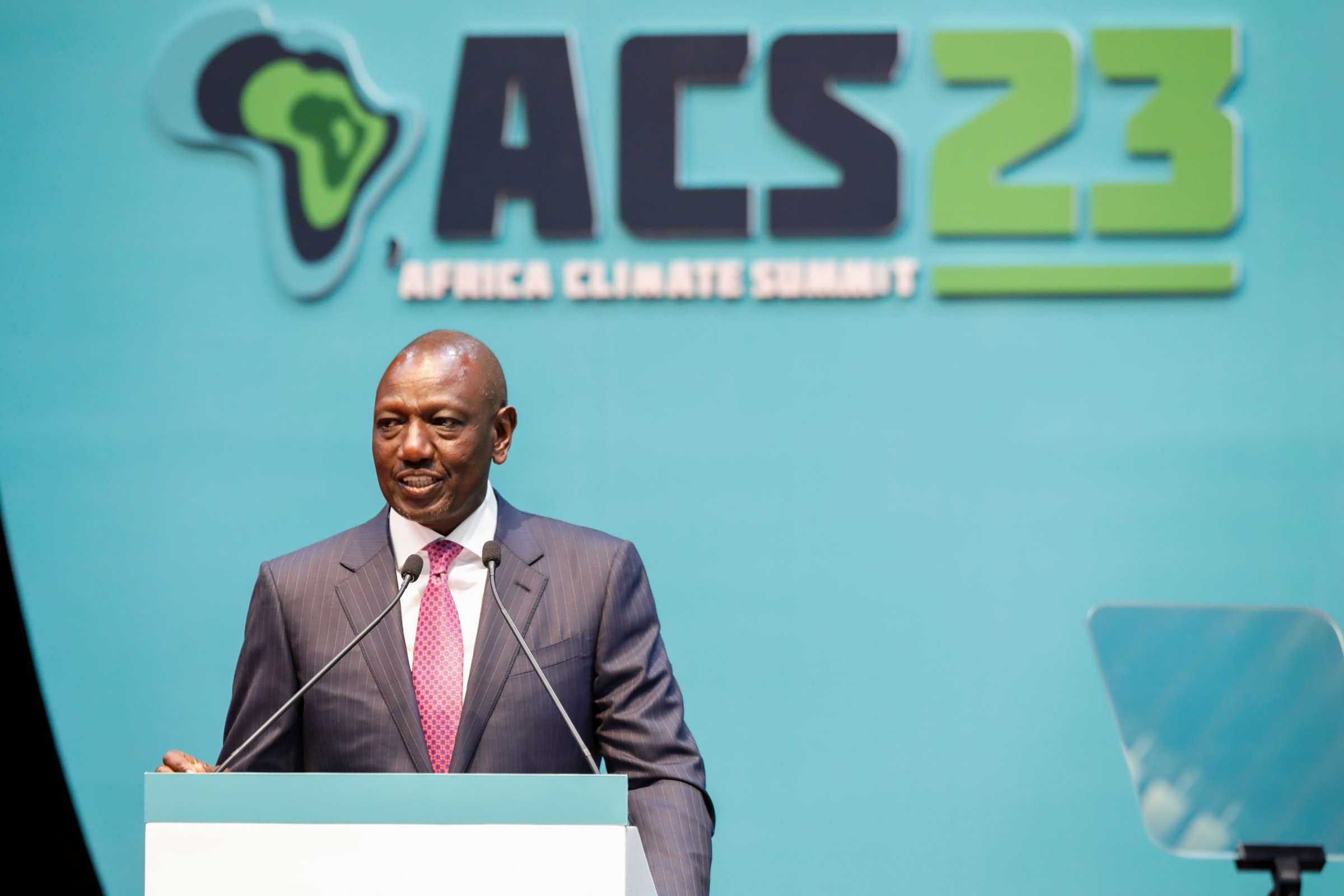
The first ever Africa Climate Change Summit began today, bringing heads of state, diplomats, and experts from all over the continent for three days in Nairobi. The event is co-hosted by Kenya and the African Union, and panels will discuss topics like climate finance, renewable energy, land use, and sustainable infrastructure.
Despite contributing just 3.8% of the globe’s historical carbon emissions, Africa faces unique challenges when it comes to climate change because of its complex and poorly understood weather systems, says Richard Washington, a professor of climate science at the University of Oxford.
“The climate systems on the African continent as a whole have got the biggest vulnerability of anywhere on Earth,” Washington says. “It's a combination of a physical climate system that is not particularly well understood compared with many other regions of the world and the vulnerability of the society.”
Over the last few years, the continent has seen especially disturbing effects of climate change. A deadly ongoing drought since 2020 in East Africa has left millions living on the brink of famine. In West Africa, rising tides are threatening the existence of entire villages. And historic floods in South Sudan have destroyed homes and roads that provided humanitarian aid to South Sudanese refugees.
More From TIME
The event takes place just a few months ahead of the COP28 Climate Summit in Dubai, where a committee to provide loss and damage compensation to developing countries impacted by climate change will meet for the first time. Countries first agreed to establish the loss and damage fund at the COP27 summit in Sharm el-Sheikh, Egypt last year.
In 2009 at the COP15 summit in Copenhagen, developed countries committed to a goal of mobilizing $100 billion per year through a combination of loans and investments to assist developing countries with reaching environmental goals. But those targets have been missed every year, topping out at $83 billion in 2020, according to data from the OECD.
“We expect some agreement on the arrangements and lay the foundation for the fund to be operational,” says Charra Tesfaye Terfassa, a senior associate at the climate change think tank E3G. “The idea of the summit is to resolve some of these issues, including the climate outcomes from COP28, and work on broader issues such as the improvement of the reform of the global financial architecture, which is not delivering enough for Africa and other developing countries.”
However, the tone of the summit is not just about seeking compensation for losses and damages, Terfassa says.
“The different tone that is being set here is that climate is not just a burden that African countries and other poor countries would seek support for. It's also an opportunity to chart a development pathway that is congruent with climate aims.”
Experts tell TIME that because the continent has less developed fossil fuel infrastructure than other parts of the world, it's possible that African countries could more easily build up their renewable infrastructure.
Kenya’s new president, William Ruto, who was elected last year, has focused on the potential economic opportunities during his opening remarks at the summit today.
“For a very long time we have looked at this as a problem. It is time we flipped and look at it from the other side. There are immense opportunities as well,” Ruto said. “[Economic development] is often cast as a tradeoff with environmental stewardship as if they are mutually exclusive, when in actual fact they are positively reinforcing.”
“A lot of African leaders talk about the fact that they did very little to cause the problem, but yet they're hit the worst and therefore they deserve compensation. That's not the narrative of William Ruto,” David McNair, of the anti-poverty organization OneCampaign, told TIME in June.
Ruto has instead argued that both rich and poor countries will benefit from coordinated climate action.
“If you look at things like carbon capture and storage, one of the best places on the planet to do that is Kenya's Rift Valley because of its geothermal energy,” McNair said, referring to the region's abundance of geothermal wells, which can be used to produce energy using heat from beneath the Earth’s crust.
“What they're saying is we want low cost investment to help us harness this economic opportunity and transform our economies," McNair said.
More Must-Reads from TIME
- Cybersecurity Experts Are Sounding the Alarm on DOGE
- Meet the 2025 Women of the Year
- The Harsh Truth About Disability Inclusion
- Why Do More Young Adults Have Cancer?
- Colman Domingo Leads With Radical Love
- How to Get Better at Doing Things Alone
- Michelle Zauner Stares Down the Darkness
Contact us at letters@time.com